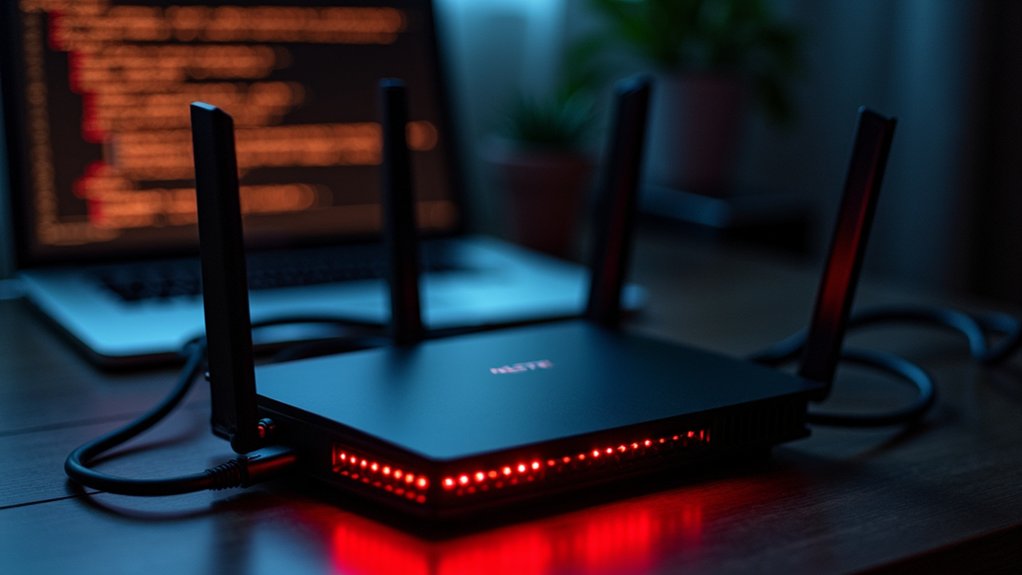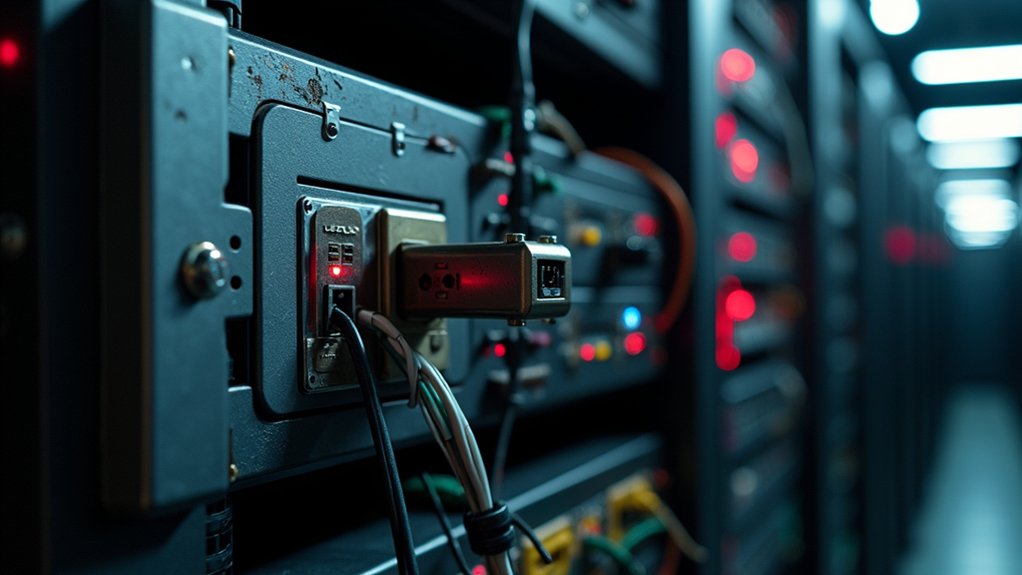Modern wireless networks have become prime targets for cybercriminals, with security researchers documenting a 600% increase in Wi-Fi-related attacks over the past three years. Router manufacturers continue shipping devices with default usernames, passwords, and Service Set Identifiers that create immediate vulnerabilities, as these credentials are publicly documented and widely exploited by attackers seeking unauthorized access to administration panels.
Default router credentials create immediate security vulnerabilities that cybercriminals systematically exploit to gain unauthorized network access.
Network security experts consistently identify authentication weaknesses as the primary entry point for compromised systems. Default passwords remain particularly problematic since they are often simple, predictable combinations that succumb easily to brute force attacks. Evil twin attacks can intercept sensitive data when users connect to malicious networks masquerading as legitimate ones.
Two-Factor Authentication provides substantial protection by requiring additional verification beyond standard passwords, whereas password managers facilitate users to maintain complex, unique credentials across multiple network access points. Regular password rotation further limits exposure from compromised credentials, though this practice must be balanced with user convenience to guarantee compliance.
Encryption protocols serve as the fundamental barrier between legitimate users and potential eavesdroppers. WPA3 represents the current gold standard for wireless security, scrambling data transmitted between devices and routers to prevent interception.
Organizations with older equipment can maintain adequate protection using WPA2 encryption, though upgrading to WPA3 remains the recommended approach. Open networks without encryption expose all transmitted data to potential interception, creating significant privacy and security risks.
Network segmentation provides critical damage limitation when security breaches occur. Guest networks should maintain complete separation from primary business or residential networks, whereas IoT devices require isolation on dedicated network segments to minimize vulnerability exposure.
VLAN configuration permits administrators to enforce strict separation between different network segments, assuring that compromised devices cannot access critical systems.
Access control mechanisms offer additional layers of protection through MAC filtering, which restricts network access to specific registered devices, and firewall rules that block unauthorized connection attempts. However, security experts now recommend that MAC address filtering should be disabled as it does not significantly enhance security while potentially creating unnecessary complexity. Disabling UPnP prevents automatic device discovery that can pose significant security risks by allowing unauthorized devices to connect to the network.
Network access control lists permit administrators to restrict traffic based on IP addresses and protocols, whereas captive portals require user authentication before granting access.
Continuous monitoring remains fundamental for identifying suspicious patterns, unauthorized devices, and potential security breaches. Intrusion detection systems provide real-time alerts for security incidents, whereas bandwidth monitoring helps identify unusual data transfers that might indicate system compromise.
Physical security measures, including strategic router placement and WPS disabling, complete extensive network protection strategies.









